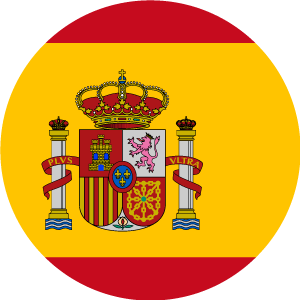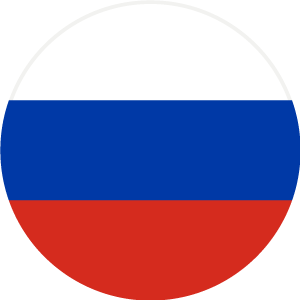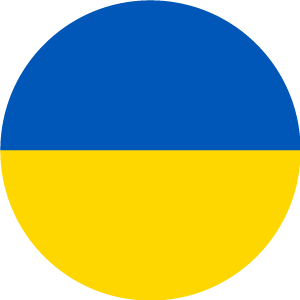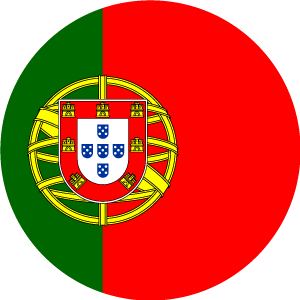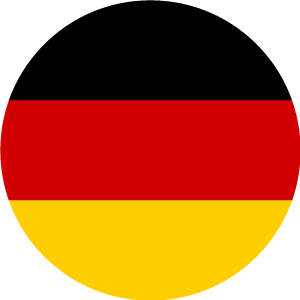Keyword Search Result
[Keyword] zerotree(10hit)
| 1-10hit |
List Based Zerotree Wavelet Image Coding with Two Symbols
- LETTER-Image Processing, Image Pattern Recognition
- Vol:
- E87-D No:1
- Page(s):
- 254-257
This paper presents a novel wavelet compression technique to increase compression of images. Based on zerotree entropy coding method, this technique initially uses only two symbols (significant and zerotree) to compress image data for each level. Additionally, sign bit is used for newly significant coefficients to indicate them being positive or negative. Contrary to isolated zero symbols used in conventional zerotree algorithms, the proposed algorithm changes them to significant coefficients and saves its location, they are then treated just like other significant coefficients. This is done to decrease number of symbols and hence, decrease number of bits to represent the symbols used. In the end, algorithm indicates isolated zero coordinates that are used to change the value back to original during reconstruction. Noticeably high compression ratio is achieved for most of the images, without changing image quality.
Multiresolution Motion Estimation with Zerotree Coding Aware Metric
Yih-Ching SU Chu-Sing YANG Chen-Wei LEE Chin-Shun HSU
- LETTER-Multimedia Systems
- Vol:
- E86-B No:10
- Page(s):
- 3152-3155
In this paper, a new Hierarchical Sum of Double Difference metric, HSDD, is introduced. It is shown, as opposed to conventional Sum of Absolute Difference (SAD) metric, how this zerotree coding aware metric can jointly constrain the motion vector searching for both temporal and spatial (quad-tree) directions under multiresolution motion estimation framework. The reward from the temporal-spatial co-optimization concept of HSDD is that fewer bits are spent later for describing the isolated zeros. The embedded wavelet video coder using HSDD metric was tested with a set of video sequences and the compression performance seems to be promising.
Performance Analysis and Comparison of Non-embedded and Embedded Wavelet Coders
Hyun Joo SO Young Jun JUNG Jong Seog KOH Nam Chul KIM
- PAPER-Image Processing, Image Pattern Recognition
- Vol:
- E86-D No:6
- Page(s):
- 1103-1109
In this paper, we analyze wavelet-based coding in a rate-distortion (R-D) sense by using Laplacian and Markov models and verify the results with the performance of the typical embedded coders, EZW and SPIHT, and the non-embedded coder implemented here. Laplacian represents the probability density function (pdf) of wavelet coefficients and Markov statistical dependency within and among subbands. The models allow us to easily understand the behavior of a thresholding and quantization part and a lossless coding part and associate the embedded coders with the nonembedded coder, which is the point the paper approaches. The analytic results are shown to coincide well with the actual coding results.
Hardware-Efficient Architecture Design for Zerotree Coding in MPEG-4 Still Texture Coder
Chung-Jr LIAN Zhong-Lan YANG Hao-Chieh CHANG Liang-Gee CHEN
- PAPER-VLSI Design Technology and CAD
- Vol:
- E86-A No:2
- Page(s):
- 472-479
This paper presents a hardware-efficient architecture of tree-depth scan (TDS) and multiple quantization (MQ) scheme for zerotree coding in MPEG-4 still texture coder. The proposed TDS architecture can achieve its maximal throughput to area ratio and minimize the external memory access with only one wavelet-tree size on-chip buffer. The MQ scheme adopts the power-of-two (POT) quantization to realize a cost-effective hardware implementation. The prototyping chip has been implemented in TSMC 0.35 µm CMOS 1P4M technology. This architecture can handle 30 4-CIF (704576) frames per second with five spatial scalability and five SNR scalability layers at 100 MHz working frequency.
An Embedded Zerotree Wavelet Video Coding Algorithm with Reduced Memory Bandwidth
Roberto Y. OMAKI Gen FUJITA Takao ONOYE Isao SHIRAKAWA
- PAPER-Image
- Vol:
- E85-A No:3
- Page(s):
- 703-713
A wavelet based algorithm for scalable video compression is described, with the main focus put on memory bandwidth reduction and efficient VLSI implementation. The proposed algorithm adopts a modified 2-D subband decomposition scheme in conjunction with a partial zerotree search for efficient Embedded Zerotree Wavelet coding. The experiment with the performance of the proposed algorithm in comparison with that of conventional DWT, MPEG-2, and JPEG demonstrates that the image quality of the proposed algorithm is consistently superior to that of JPEG, and our scheme can even outperform MPEG-2 in some cases, although it does not exploit the inter-frame redundancy. In spite of the performance inferiority to the conventional DWT, the proposed algorithm attains significant reduction of DWT memory requirements, enhancing a reasonable balance between implementation cost and image quality.
Simplified Wavelet Based Image Compression Using Fixed Length Residual Value
- LETTER-Image Processing, Image Pattern Recognition
- Vol:
- E84-D No:12
- Page(s):
- 1828-1831
Wavelet based image compression is getting popular due to its promising compaction properties at low bitrate. Zerotree wavelet image coding scheme efficiently exploits multi-level redundancy present in transformed data to minimize coding bits. In this paper, a new technique is proposed to achieve high compression by adding new zerotree and significant symbols to original EZW coder. Contrary to four symbols present in basic EZW scheme, the modified algorithm uses eight symbols to generate fewer bits for a given data. Subordinate pass of EZW is eliminated and replaced with fixed residual value transmission for easy implementation. This modification simplifies the coding technique as well and speeds up the process, retaining the property of embeddedness.
A High Performance Embedded Wavelet Video Coder
Tingrong ZHAO Masao YANAGISAWA Tatsuo OHTSUKI
- PAPER
- Vol:
- E83-A No:6
- Page(s):
- 979-986
This paper describes a highly performance scalable video coder. Wavelet transform is employed to decompose the video frame into different resolutions. Novel features of this coder are 1) a highly efficient multi-resolution motion estimation that requires minimum compuation and overhead motion information is embedded in this scheme; 2) the wavelet coefficients are organized in an extended zero tree (EZT) which is much more efficient than the simple zerotree. We show with experimental results that this video coder achieves good performances both in processing time and compression ratio when applied to typical test video sequences.
Wavelet Image Coding with Context-Based Zerotree Quantization Framework
Kai YANG Hiroyuki KUDO Tsuneo SAITO
- PAPER-Image Processing, Image Pattern Recognition
- Vol:
- E83-D No:2
- Page(s):
- 211-222
We introduce a new wavelet image coding framework using context-based zerotree quantization, where an unique and efficient method for optimization of zerotree quantization is proposed. Because of the localization properties of wavelets, when a wavelet coefficient is to be quantized, the best quantizer is expected to be designed to match the statistics of the wavelet coefficients in its neighborhood, that is, the quantizer should be adaptive both in space and frequency domain. Previous image coders tended to design quantizers in a band or a class level, which limited their performances as it is difficult for the localization properties of wavelets to be exploited. Contrasting with previous coders, we propose to trace the localization properties with the combination of the tree-structured wavelet representations and adaptive models which are spatial-varying according to the local statistics. In the paper, we describe the proposed coding algorithm, where the spatial-varying models are estimated from the quantized causal neighborhoods and the zerotree pruning is based on the Lagrangian cost that can be evaluated from the statistics nearby the tree. In this way, optimization of zerotree quantization is no longer a joint optimization problem as in SFQ. Simulation results demonstrate that the coding performance is competitive, and sometimes is superior to the best results of zerotree-based coding reported in SFQ.
Flexible Zerotree Coding of Wavelet Coefficients
Sanghyun JOO Hisakazu KIKUCHI Shigenobu SASAKI Jaeho SHIN
- PAPER-Image Theory
- Vol:
- E82-A No:6
- Page(s):
- 1117-1125
We introduce an extended EZW coder that uses flexible zerotree coding of wavelet coefficients. A flexible parent-child relationship is defined so as to exploit spatial dependencies within a subband as well as hierarchical dependencies among multi-scale subbands. The new relationship is based on a particular statistics that a large coefficient is more likely to have large coefficients in its neighborhood in terms of space and scale. In the flexible relationship, a parent coefficient in a subband relates to four child coefficients in the next finer subband in the same orientation. If each of the children is larger than a given threshold, the parent extends its parentship to the neighbors close to its conventional children. A probing bit is introduced to indicate whether a significant parent has significant children to be scanned. This enables us to avoid excessive scan of insignificant coefficients. Also, produced symbols are re-symbolized into simple variable-length binary codes to remove some redundancy according to a pre-defined rule. As a result, the wavelet coefficients can be described with a small number of binary symbols. This binary symbol stream gives a competitive performance without an additional entropy coding and thus a fast encoding/decoding is possible. Moreover, the binary symbols can be more compressed by an adaptive arithmetic coding. Our experimental results are given in both binary-coded mode and arithmetic-coded mode. Also, these results are compared with those of the EZW coder.
A New Image Coding Technique with Low Entropy Using a Flexible Zerotree
Sanghyun JOO Hisakazu KIKUCHI Shigenobu SASAKI Jaeho SHIN
- PAPER-Source Encoding
- Vol:
- E81-B No:12
- Page(s):
- 2528-2535
A zerotree image-coding scheme is introduced that effectively exploits the inter-scale self-similarities found in the octave decomposition by a wavelet transform. A zerotree is useful for efficiently coding wavelet coefficients; its efficiency was proved by Shapiro's EZW. In the EZW coder, wavelet coefficients are symbolized, then entropy-coded for further compression. In this paper, we analyze the symbols produced by the EZW coder and discuss the entropy for a symbol. We modify the procedure used for symbol-stream generation to produce lower entropy. First, we modify the fixed relation between a parent and children used in the EZW coder to raise the probability that a significant parent has significant children. The modified relation is flexibly modified again based on the observation that a significant coefficient is more likely to have significant coefficients in its neighborhood. The three relations are compared in terms of the number of symbols they produce.





